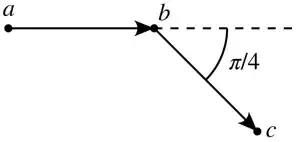It is not possible, and the proof can be done with some trigonometry and a basic understanding of rational numbers:
Suppose the angle between two vectors $(a,b)$ and $(c,d)$ in the plane is $\alpha - \beta$, where $\alpha$ is the larger of the two angles made by the two vectors with the $x$-axis, and $\beta$ is the smaller.
Then
$$\tan(\alpha-\beta) = \frac{\tan \alpha - \tan \beta}{1+\tan \alpha \tan \beta} = \frac{ad-bc}{ac+bd}$$
Thus the $\tan$ of any angle made between two integer lattice vectors is a rational number.
By dividing a regular octagon into 8 isosceles triangles and looking at the base angles of these 8 triangles, we see that we need an angle of $3\pi/8$, but $\tan (3\pi/8) = 1+\sqrt{2}$ which is irrational. Thus the octagon is not possible.
Note 1:
The angle $3\pi/8$ which is used in the proof, is actually the angle between one side of the octagon, and a "diameter" of the octagon, joining two opposite vertices. Clearly, the end-point of these two lengths would have integer coordinates if such a regular (integer) octagon were possible.
Note 2:
It seems (judging by the comment below) that my explanation has not been clear enough for everyone. I am NOT talking about the angle between two adjacent sides of an octagon being $3\pi/8$ here. The angle between adjacent sides is $3\pi/4$, and the angle I am talking about is exactly half of that.
Edit:
This question and the answer by André Nicolas give more information - and an alternative proof.
